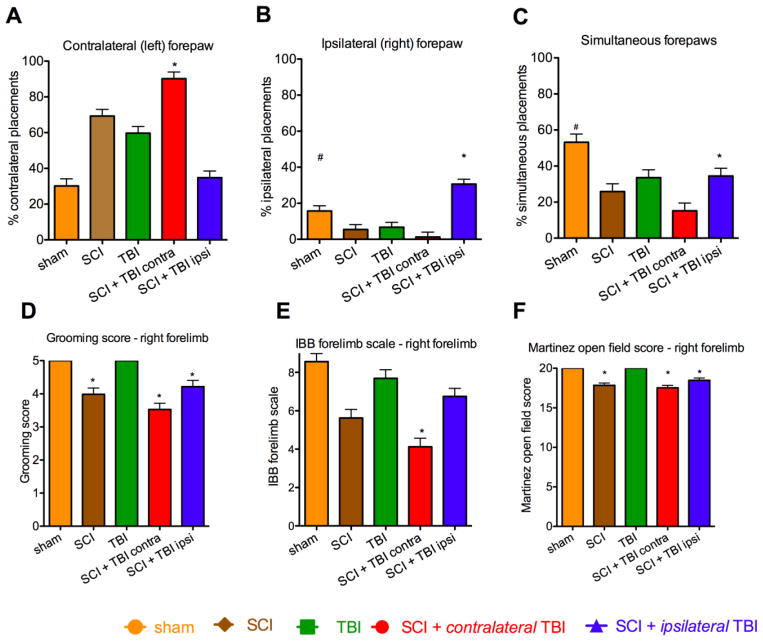FIG. 4.
Performance over all days. (A) Contralateral (left) forepaw placements: The SCI + contralateral TBI group used their contralateral (left) forepaw more than other injury groups (p* < 0.05). (B) Ipsilateral (right) forepaw placements: SCI + ipsilateral TBI rats used their right forepaw more as compared to the other injury groups (p* < 0.05). The Sham group used the ipsilateral forepaw more than SCI alone, TBI alone, and SCI + contralateral TBI (p# < 0.05). (C) Simultaneous (both) paw placements: Shams used simultaneous forepaw placements more than the injury groups (p#<0.05). SCI + ipsilateral TBI group used simultaneous forepaw placement more than SCI + contralateral TBI group (p*<0.05). (D) Grooming test: Sham and TBI alone groups had better grooming scores than groups with SCI (p* < 0.05). (E) Irvine, Beatties, Bresnahan (IBB) forelimb scale: The SCI + contralateral TBI group had worse performance than other injury groups (p* < 0.05) (F) Open field forelimb locomotor test: Sham and TBI alone groups performed better than SCI alone, SCI + contralateral TBI, and SCI + ipsilateral TBI groups (p* < 0.05). SCI: spinal cord injury, TBI: traumatic brain injury. Error bar shows standard error of the mean.

